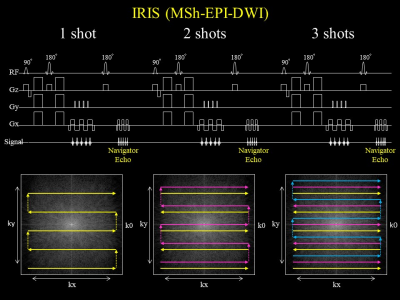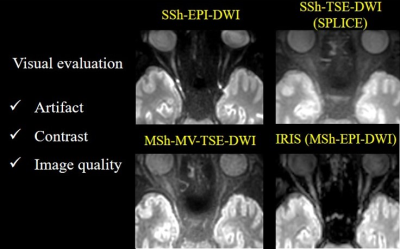Yutaka Hamatani1, Kayoko Abe2, Masami Yoneyama3, Jaladhar Neelavalli4, Yasuhiro Goto1, Isao Shiina1, Kazuo Kodaira1, Takumi Ogawa1, Mamoru Takeyama1, Isao Tanaka1, and Shuji Sakai2
1Department of Radioligical Services, Tokyo Women's Medical University Hospital, Tokyo, Japan, 2Department of Diagnostic imaging & Nuclear Medicine, Tokyo Women's Medical University Hospital, Tokyo, Japan, 3Philips Japan, Tokyo, Japan, 4Philips Healthcare, Bangalore, India
1Department of Radioligical Services, Tokyo Women's Medical University Hospital, Tokyo, Japan, 2Department of Diagnostic imaging & Nuclear Medicine, Tokyo Women's Medical University Hospital, Tokyo, Japan, 3Philips Japan, Tokyo, Japan, 4Philips Healthcare, Bangalore, India
IRIS (Image
Reconstruction using Image-space Sampling Function) is one of multi shot echo
planar EPI-DWIs combined with phase correction, and it was the best sequence to
visualize the optic nerve, compared other conventional DWI techniques.


